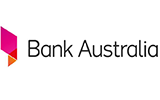What is an education loan?
Education loans are a type of personal loan you can use to pay for the cost of studying or private school fees.
With some postgraduate courses and school programs costing tens of thousands of dollars, an education loan can be a practical financing option to manage these expenses and spread out the cost.
They say you have to spend money to make money – and investing in education, whether for yourself or your child, can be a wise financial decision.
But if you're studying, you might only be able to work part-time, making it harder to pay the bills. That’s where a loan could help bridge the gap.
How do education loans work?
Education loans work in the same way as standard personal loans. You borrow a lump sum to cover your study cost and then repay the loan gradually through regular installments.
Here’s what you can get with an education loan:
- Borrow between $2,000 and $100,000 (our personal loan statistics show the average loan is just over $22,000).
- Education loans are generally unsecured personal loans, meaning you don’t need to provide an asset you own as security. But there are secured personal loan options available.
- The interest rate will depend on your credit score and other factors specific to you. Interest rates can either be fixed or variable, which will determine whether your repayments remain the same during the entire repayment term (fixed) or potentially go up or down (variable).
- You repay it over a term between one and seven years through regular repayments – weekly, fortnightly or monthly.
Low rate education loans
| Loan | Interest rates from | Comparison rates from^ | Loan amounts |
|---|---|---|---|
| Harmoney Personal Loan | 5.76% | 5.76% | $2,000 - $100,000 |
| Horizon Bank Personal Loans Secured by Deposits | 5.79% | 6.00% | $500 - $100,000 |
| Horizon Bank Personal Loans Secured by Mortgage | 5.79% | 7.84% | $500 - $100,000 |
| NOW Finance Secured Personal Loan | 5.95% | 5.95% | $15,000 - $100,000 |
| NOW Finance Unsecured Personal Loan | 5.95% | 5.95% | $5,000 - $50,000 |
| MoneyMe Personal Loan | 5.99% | 6.70% | $5,000 - $70,000 |
| Revolut Personal Loan | 6.17% | 6.17% | $5,000 - $50,000 |
| MoneyPlace Education Loan | 6.30% | 6.30% | Up to $80,000 |
| Liberty Unsecured Personal Loan | 6.30% | 6.30% | $5,000 - $80,000 |
| Cairns Bank Secured Loans - Real Estate | 6.59% | 7.72% | $3,000 - $25,000 |
What can I use an education loan for?
You can normally use the funds for anything related to academia and studies. Most people use education loans to pay for things like:
- Admission fees
- Course/tuition fees
- Textbooks, laptops, course-related purchases
- Accommodation and living costs
- Travel costs
- Scholarship costs (some scholarships may be partially funded by students)
How to choose an education loan
Just like deciding on a course, choosing the right loan is a major decision. When you’re comparing your options, you’ll want to look at more than just how much you can borrow. Here’s what you need to look at:
Interest rates
The interest you’ll be charged on the amount you borrow, known as the ‘loan principal’. Be mindful that most (if not all) lenders advertise their best rates and you may not qualify for their lowest rate.
Fees
Upfront and ongoing charges, such as an establishment fee or monthly loan service fee. You may be able to avoid fees completely on some loans but other fees like late payment fees may apply.
Loan term
A shorter loan term (1-3 years) means higher repayments, but you’ll pay less interest compared to a longer term (4-5 years). You can easily see the difference by punching in different loan terms in our personal loan calculator.
Features
The ability to make extra repayments and pay off the loan early without penalty. A redraw facility can be handy too as it allows you to withdraw your extra repayments if you need to access cash.
Education loan cost example
According to MBA news, the average cost of an MBA in Australia in 2025 is $64,211. To give you an idea of potential loan costs, we crunched the numbers using a 5-year loan term at an interest rate of 13.87% p.a. (the average personal loan rate in our database).
- Monthly repayments:
$1,490 - Total interest paid over 5 years:
$25,174 - Total cost of education (loan + interest): $89,385
Investing in your education might feel like a big financial commitment, but it can pay off. According to the Australian Institute of Business' 2024 Alumni Insights Report, 73% of its MBA graduates received an average salary increase of $42,000.
Of course, results will vary. Salary increases depend on factors like the field of study, the qualification level, industry demand and individual career paths.
University finance vs personal loan
This table compares the key features of university and college finance options with personal loans, helping you understand which might be the best fit based on your financial needs and study plans.
Eligibility | |
University / college finance options | Australian citizens, humanitarian visa holders and New Zealand Special Category Visa holders |
Personal loan | Australian citizens and permanent residents (some lenders may accept eligible visa holders) |
Covers living costs | |
University / college finance options | No (tuition only) |
Personal loan | Yes |
Repayment terms | |
University / college finance options | Income-based (HELP) or short-term plans at private colleges and TAFEs |
Personal loan | Fixed monthly repayments (typically 1 - 7 years) |
Interest | |
University / college finance options | Indexed (HELP) |
Personal loan | 6% - 15% |
Flexibility | |
University / college finance options | Limited |
Personal loan | Often flexible terms (e.g. access extra repayments or early payout without penalty) |
| University / college finance options | Personal loan | |
|---|---|---|
Eligibility | Australian citizens, humanitarian visa holders and New Zealand Special Category Visa holders | Australian citizens and permanent residents (some lenders may accept eligible visa holders) |
Covers living costs | No (tuition only) | Yes |
Repayment terms | Income-based (HELP) or short-term plans at private colleges and TAFEs | Fixed monthly repayments (typically 1 - 7 years) |
Interest | Indexed (HELP) | 6% - 15% |
Flexibility | Limited | Often flexible terms (e.g. access extra repayments or early payout without penalty) |
Are you eligible for an education loan?
You can apply for an education loan if you are:
- Over the age of 18 years
- An Australian citizen or permanent resident
- Employed or have a regular source of income to cover the repayments
If you meet these eligibility criteria for an education loan, the lender will still need to assess your application based on your financial situation.
They do this to ensure the loan isn’t unsuitable for you and that you can easily meet the repayments. Lenders usually consider:
- Your credit score
- Your income
- Your employment status (full-time, self-employed, etc.)
- Assets you own (i.e. a house or car)
- Your regular expenses
- Other debts you have (e.g. credit cards)
- How many dependents you have
How to apply for an education loan
To get a personal loan for education, you’ll need to:
Compare lenders who offer education loans
There are dozens of personal loans for education you can compare using the table on this page. Check the interest rate range as well as the comparison rate range. You can also review the loan term options and the borrowing limits offered by lenders.
Check your credit score
You can do this online for free using a credit reporting agency like Equifax or similar. A good credit score will typically be 660 or higher, but that doesn’t mean you won’t find a loan if your credit score is below average. It just means you may need to apply for a bad credit personal loan.
Submit a loan application
Once you’ve found a loan that meets your needs, lodge an application to the lender. If time is precious or you need help with your application, consider using a personal loan broker who can handle the paperwork for you.
Provide supporting documentation
Provide documents requested by the lender to prove your identity and financial details (e.g. payslips, bank statements, credit card and loan statements). If you’re self-employed, a lender may require additional paperwork, or you might consider a low doc personal loan instead.
The lender will assess your application
As with any personal loan, the lender will assess your application and determine whether you can comfortably make the repayments. They’ll also conduct a hard credit check, which is why it’s worth ensuring your finances are squeaky-clean at least 3 to 6 months prior to applying.
Sign the loan contract if approved
If approved, review the education loan contract and sign it if everything is in order. The loan funds will be transferred to your nominated bank account. If your application is straightforward, the entire process can be completed within 1 to 2 business days. More complex applications may take a little longer to process.
Pros & cons of education loans
Pros
- May enable you to pursue study that would be otherwise out of reach.
- You may have the flexibility to structure your loan term to keep loan repayments low while you’re studying but pay extra when you’re finished.
- Depending on your circumstances, you may be able to claim your education loan costs (e.g. interest) as a tax deduction, according to the ATO.
Cons
- Interest and fees on your education loan will add to the overall cost of your study.
- If you choose a long term, you could be repaying the loan long after you’ve finished your study.
- Due to the eligibility criteria, it may not be suitable if you won’t be earning while you are studying.
Other ways to finance education costs
Higher Education Loan Program (HELP)
The government offers a number of different interest-free loan schemes for eligible students enrolled in a Commonwealth supported place at university. There are loans that can be used for both tuition fees and living costs, including OS-HELP, which can be used to fund overseas study.
VET Student Loans
This program helps eligible students pay tuition fees for approved higher-level vocational education and training (VET) courses. To be eligible for a VET Student Loan you must be studying at a VET Student Loans approved course provider.
Government student assistance
Government assistance programs are available for eligible students, offering regular cash payments that do not have to be repaid.
Scholarships
Most universities offer scholarships that can cover part of all of your study costs. These are usually available for students in their first year of study right through to postgraduate level.
Ready to compare education loan options?
Get your best offers from multiple lenders. There's no obligation and checking your rates won't impact your credit score.
















